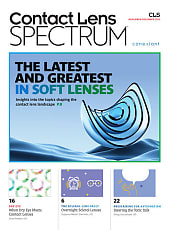
Prevent Blindness has designated April as Women’s Eye Health and Safety Month. The initiative aims to raise awareness about vision issues that disproportionately affect women. The nonprofit offers free educational resources, including fact sheets, social media materials, videos, and web pages on various eye health topics, that eyecare professionals can share with their patients.
Women are more likely than men to develop certain eye diseases, including age-related macular degeneration, cataracts, dry eye, glaucoma, and thyroid eye disease. According to the American Academy of Ophthalmology (AAO), longer life expectancy contributes to this increased risk, as many eye conditions are age-related. Additionally, social and economic factors can limit women's access to eye care, particularly in developing regions.
As part of its awareness efforts, Prevent Blindness has released a new episode in its Focus on Eye Health Expert Series, “Healthy Vision and Eye Safety Tips for Women.” In this episode, Prevent Blindness vice president of public health and policy Kira Baldonado interviews Maria Sampalis, OD, owner of Sampalis Eye Care, to discuss the importance of regular eye care for women, common vision conditions, and potential barriers to accessing care.
“As eyecare professionals, it's crucial to recognize the unique eyecare needs based on gender,” says Dr. Sampalis. “Patients often present with a wide range of concern, and we must be at the forefront of addressing these needs to ensure the best possible care.”
Another episode in the Focus on Eye Health Expert Series, “Women’s Eye Health and Safety,” features Janine Austin Clayton, MD, FARVO, director of the office of research on Women’s Health at the National Institutes of Health, discussing women's eye health. Dr. Clayton also contributed an essay on the topic for Prevent Blindness.
Prevent Blindness continues to advocate for improved access to eye care, particularly for women who face a higher risk of vision impairment. The organization provides a free online directory of financial assistance programs for vision care in both English and Spanish.
Additionally, the AAO’s EyeCare America program offers free eye exams for eligible individuals aged 65 and older, with the minimum age requirement set to lower to 18 on April 7. More information is available here.



